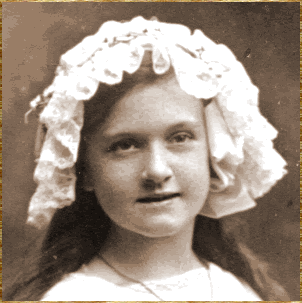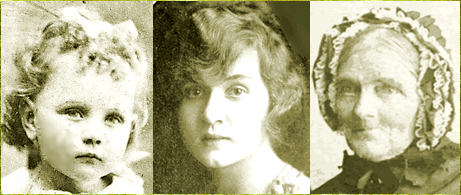Roman times
The Julian calendar was introduced by Julius Caesar in 45 BCE. The year began on 1st January with the length of months alternating between 31 and 30 days – except for February, which had 30 days in a leap year and 29 days otherwise. (This replaced an earlier Roman calendar which had 10 months of alternating 30 and 31 days, followed by a 'winter gap', the length of which varied from year to year. The last year of that old calendar actually had 445 days.)
Complications to the Julian system occurred when the Senate wanted to name a month after the then Emperor Augustus. To avoid slighting the Emperor the month named for Augustus must be as long as the month named for Julius and should follow it directly. July and August became 31 days each and February surrendered an extra day. (To avoid 3 successive 31 day months September was shortened to 30 days, October lengthened to 31, and so on.)
The Romans initially introduced leap years every 3 years. By about 9 BCE the calendar was very obviously getting out of step with the solstices, so leap years were abandoned altogether until about AD 4 when leap years were re-introduced every 4 years. Even this adjustment led to an error of 45 minutes in 4 years, or 3 days in 400 years. Over many years this miscalculation became quite noticeable.
Early Christian times
Around 150 AD Christian churches decided to take over the pagan festival of Saturnalia (the winter solstice) and celebrate 25th December as Christ's birthday. Later when the cult of the Virgin Mary became popular, it was thought that the Christian era should start on the day of Christ's conception – so 9 months earlier – on 25th March, which they named Lady Day. The year began on 25th March and ended on the following 24th March, adding an extra day in February every 4 years to make a leap year. This became known as the Julian calendar.
Pope Gregory (16th century)
All moveable feasts in the church calendar relate to Easter. Gospel traditions relate Easter to the Jewish festival of Passover, which in turn was related to the spring equinox, the phase of the moon and the celebration of the Sabbath. Over the centuries by following the Julian calendar the Easter festival slowly but surely moved away from the spring equinox towards the summer solstice.
The new system (adopted by Pope Gregory in the 16th century) specified a calendar with a year length of 365 days, 5 hours, 40 minutes, 20 seconds. So 3 days had to be dropped every 400 years. It was decided that those years which were divisible by 100 would be leap years only if they were divisible by 400. To correct errors which had built up over centuries, Pope Gregory declared that Thursday 4th October 1582 in the Julian calendar should be immediately followed by Friday 15th October in the Gregorian calendar. Another change was that the calendar year would once again begin on January 1st.
Most Roman Catholic countries of Europe adopted the Gregorian calendar in 1582 or soon after. However most Protestant countries ignored this Papal decision for another 200 years. German and Netherlands Protestant states and Denmark adopted the Gregorian calendar in 1700. Sweden wavered for some years, finally adopting the full Gregorian calendar in 1753. Scotland resumed starting the year on 1st January in 1600 but did not change to the new rule for leap years (or make the correction for those 11 days) until 1752.
It is apparent that many who lived in the 16th to 18th centuries were aware of the different calendars in operation and tried to write dates accordingly – although sometimes they erred when making adjustments.
Lord Chesterfield (18th century England)
England still followed the 'old style' Julian calendar (with the year ending 24th March) until 1751 – that year began on 25 March and ended on 31 December. Lord Chesterfield's Act of 1751/2 stated that the year 1752 would begin on 1st January and end on the following 31 December. In 1752 only the calendar was adjusted to omit 11 days (2nd September was followed by 14th September) to bring their 'new style' (Gregorian) calendar back in line with most of the rest of Europe.
From 1793-1805 France adopted a different 'French republican calendar' (for details see below).
20th century
Orthodox countries (who gave allegiance to the Patriarch of Constantinople) were even slower to change. Russia did not convert to the new calendar until after the Russian Revolution. An interesting consequence of this was that when London hosted the 1908 Olympic Games, the Russian team arrived 12 days late!
Yugoslavia and Romania changed to the Gregorian calendar in 1919, Greece in February 1923. Turkey was the last major European country to fully adopt the Gregorian calendar – on 1st January 1927.
Ancient civilisations that had their own calendars pragmatically adopted the Gregorian calendar for ease of trade. Japan used the Gregorian calendar from 1872 (but named the years according to the era of the Emperor's reign). China used the Gregorian calendar for business purposes from 1912.
Which explains why ...
In England the 'quarter days' (for quarterly events like the Quarter court sessions) were Lady Day (March 25) when the legal year started, St John the Baptist Day (Midsummer Day, June 24), Michaelmas (September 29) and Christmas (December 25). These were close to the equinoxes and solstices and were regarded as the beginning dates of the seasons. When the calendar changed London bankers refused to pay their taxes 11 days early – and would not pay before 5th April, which still remains the date of the end of the fiscal year.
When reading English dates prior to 1752 regard the years with care. Was the date written by someone from that time? If so remember the year ran from March to March. However if the date was written by someone in modern times, did they understand the calendar in place at the time? What system was intended when the date was written eg 2nd January 1701? To avoid confusion the convention is to write that date as 2nd January 1701/2 which uniquely identifies the year. (1701 in this case being the year according to the old Julian calendar and 1702 according to the 'new' Gregorian calendar.)
Further information about calendars:
- http://www.tondering.dk/claus/calendar.html (many historical calendars & frequently asked questions about calendars)
https://tondering.dk/overview/en/calendar (calendar calculations) - http://stevemorse.org/#calendar (conversions between various calendars, including Jewish & Muslim calendars)
- https://www.timeanddate.com (calculators of calendars & dates)
- http://www.cyndislist.com/calendars/calculators-and-converters/ (calendars & dates, calculators & converters)
- https://calendarhome.com/print-a-calendar/ (print a calendar for any year)
- http://www.cree.name/genuki/dates.htm (for UK genealogists in particular, Julian vs Gregorian)
- https://www.historyireland.com/early-modern-history-1500-1700/calendars-in-conflict/ (History Ireland: Calendars in Conflict)
- https://aulis.org/Calendar/Ecclesiastical_dates.html (calculation of the English Ecclesiastical calendar)
- https://aulis.org/Calendar/Regnal_Years.html (calculation of the English regnal calendar)
- https://aulis.org/Calendar/Day_of_the_Week.html (calculation of day of the week for any given date)
- http://medievalscotland.org/history/calendar.shtml (medieval Scottish calendar and holidays)
- https://en.wikipedia.org/wiki/Irish_calendar (Irish calendar)
- http://www.webexhibits.org/calendars/calendar-chinese.html (Chinese calendar)
- https://www.napoleon.org/en/history-of-the-two-empires/the-republican-calendar/ (French republican calendar)
- http://kirchenkalender.com (Ecclesiastical calendar for Germany)
- https://unacademy.com/content/upsc/study-material/art-and-culture/various-calendars-in-india/ (Indian calendars)
- http://www.webexhibits.org/calendars/calendar-islamic.html (Islamic calendar)
- http://www.ndl.go.jp/koyomi/e/history/calendar.html (Japanese calendar)
- http://www.webexhibits.org/calendars/calendar-jewish.html (Jewish calendar)
- https://www.hebcal.com/converter/?hd=14&hm=Kislev&hy=5487&h2g=Convert+Hebrew+to+Gregorian+date (Hebrew to Gregorian calendar converter)
- https://www.godsholydays.com/calendar-computer/ (God's Holy Days - Jewish Holy Days calculated in either Gregorian or Hebrew calendar)
- https://www.timeanddate.com/calendar/mayan.html (Mayan calendar)
- https://www.familysearch.org/wiki/en/Norway_Feast_Day_Calendars (Norway feast day calendars)
- https://planetcalc.com/4213/ (Orthodox Easter date calculator)
- https://theconversation.com/explainer-the-seasonal-calendars-of-indigenous-australia-88471 (The seasonal 'calendars' of Indigenous Australia)
- https://www.timeanddate.com/time/time-zones-history.html (Why do we have time zones?)
- http://www.webexhibits.org/daylightsaving/d.html (standard time and daylight saving time)
- https://vanessafrance.wordpress.com/2012/03/25/a-brief-history-of-french-time/ (a brief history of French time standards)
Times and time zones:

